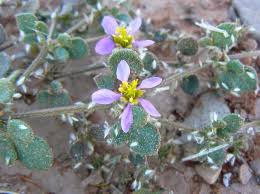Fagonia glutinosa from Libya as a Potential Source of Lead Compounds: GC-MS Characterization of Metabolites with Antimicrobial and Anticancer Activities
DOI:
https://doi.org/10.69667/rmj.25326Keywords:
Fagonia glutinosa; GC-MS; Antimicrobial; Cytotoxicity; Phytochemical.Abstract
Species of Fagonia (family Zygophyllaceae) are drought‑adapted shrubs and herbs distributed throughout North Africa, the Mediterranean Basin, and the Middle East. Traditional healing systems across these regions use Fagonia spp. to treat fever, inflammation, and cancer. Recent studies have uncovered diverse secondary metabolites, including triterpenoid saponins, flavonoids, sterols, and diterpenes, in different species. Libya harbors several Fagonia species, yet the chemical composition and pharmacological activity of the Libyan populations remain poorly characterized. To profile the phytochemicals of Fagonia glutinosa collected from arid Libyan regions using gas chromatography–mass spectrometry (GC-MS) and to evaluate its antimicrobial and cytotoxic activities in vitro. The shade-dried aerial parts were macerated in methanol. The crude extract was analyzed using GC-MS, and the bioactive constituents were identified by comparing the spectra with the NIST library entries. Antibacterial and antifungal activities were assessed against four bacteria and two fungi using agar well diffusion and broth microdilution assays, respectively. Cytotoxicity was measured against MCF‑7 breast cancer and HepG2 liver cancer cell lines using the MTT assay. Data were analyzed using one‑way ANOVA with Tukey’s post hoc test. Twenty-eight constituents, including phytol, hexadecanoic acid methyl ester, squalene, stigmasterol, lupeol, and oleic acid, were identified. The extract displayed broad-spectrum antibacterial activity (MIC 125‑250 µg mL⁻¹) and moderate antifungal activity. MCF‑7 and HepG2 cells exhibited dose-dependent viability reductions with IC₅₀ values of 43.2 µg mL⁻¹ and 57.8 µg mL⁻¹, respectively, and microscopic examination revealed apoptotic morphology. Fagonia glutinosa from Libya possesses a chemically diverse metabolome dominated by terpenoids and fatty acid esters and demonstrates noteworthy antimicrobial and anticancer activities. These findings validate the traditional uses and underscore the potential of this species as a source of lead compounds. Bioassay-guided fractionation and in vivo studies are warranted to isolate the active principles and establish safety profiles.

Downloads
Published
Issue
Section
How to Cite
Similar Articles
- Dania ELhassan , Mohanned Alwashaish , Salma Lajhar, Aya Aldiab , Khadija Safar, Prevalence, Biofilm Formation, and Antimicrobial Resistance of Uropathogens Isolated from Patients with Urinary Tract Infections in Misurata, Libya , Razi Medical Journal: Volume 1, Issue 4, 2025 (October to December)
- Nawfal Hussein, Liwar Ahmed, Halder Abozait, Antimicrobial Resistance in Iraq: A Public Health Emergency in the Shadow of Conflict , Razi Medical Journal: Volume 1, Issue 3, 2025
- Ahmed Alsharksi, Abdalla Ali, Adam Mustapha, Muna Alshagmani, Bacterial Profile and Their Antimicrobial Susceptibility Pattern of Isolates Recovered from Intensive Care Units of Libyan Hospitals. , Razi Medical Journal: Volume 1, Issue 3, 2025
- Raja Moman, Nouralhuda Altair, Abdulkarem Tamer, Amnnah Ghalbun, Nagat EL-Magrahi, Antibiosis of Antibiotics, Honey and Probiotics Related Bacteria to Diabetic Foot Infections , Razi Medical Journal: Volume 1, Issue 1, 2025
- Shahrazad Ahmed, Neyaf Alageedi, Eman Muhsin, Doaa Abdulwahab, The Role of Immune Response in Bacterial Urinary Tract Infections in Iraq: A Review , Razi Medical Journal: Volume 1, Issue 2, 2025
- Mufeedah Mansour, Khoulah Alaribi, Prevalence and Outcomes of Coagulase-Negative Staphylococci in Newborns Admitted to the NICU in a Tertiary Hospital in Libya , Razi Medical Journal: Volume 1, Issue 2, 2025
- Shahad Alwan, Molecular detection of the MexA efflux pump gene in Pseudomonas aeruginosa isolated from Diyala Province , Razi Medical Journal: Volume 1, Issue 3, 2025
- Alaa ALMoula, Lana Mansor, Sarmad Almaula, The Importance of Probiotics in Human and Animal Life: A Review , Razi Medical Journal: Volume 1, Issue 4, 2025 (October to December)
- Fatima Elhag Ahmed, Susan Zroog, Abdelhakam Ali, Nurses' Knowledge regarding Immediate Care of Newborns in the Saudi Hospital for Obstetrics and Gynecology, Sudan , Razi Medical Journal: Volume 1, Issue 3, 2025
- Salem Elfard, Zinab Elfituri, Integration of Social and Behavioral Sciences (SBS) in Undergraduate Libyan Medical Education Programs , Razi Medical Journal: Volume 1, Issue 3, 2025
You may also start an advanced similarity search for this article.








